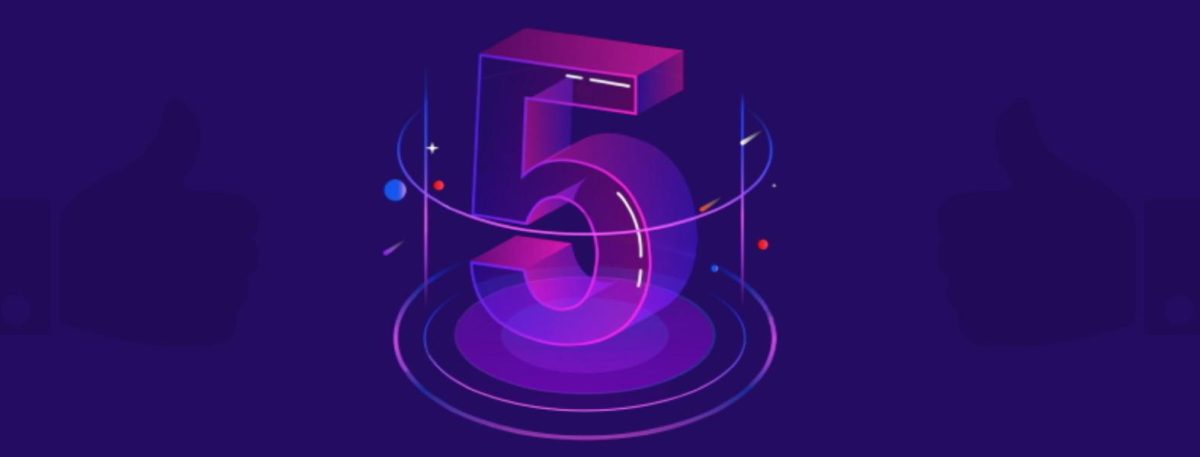Branding outlines a business and sets it apart from the competition. You will agree, in an age of digital diversions, a good brand name and a great logo aren’t enough to stimulate the interest and attention of the modern and ever-evolving consumer. To create a rock-solid brand identity that will undeniably capture the attention of the target audience it is vital to have a good grasp of the latest branding trends.
Our team’s years of experience and veteran minds have put together important branding trends encompassing logo designs and social media hashtags to customer-driven strategies and branding technologies; here’s significant information you need to keep up with your competitors and stand out in your industry. The modern customer wants substance and purpose. The thinking mind is looking for values your company upholds and the advocacies your organisation stands for. The customer is far more conscious and evolved and is living in an ocean of choices, one more appealing than the other. Some of the challenges that any dedicated brand manager would face today are delivering messages to the right audiences, especially in a clutter of digital distractions.
Another aspect to weigh is brand voice and personalisation and these can get pretty tricky. In order to help you overcome these challenges as well as ensure effective branding for your company, we have compiled the essential branding trends and tools of today. However, before you browse our list of branding trends, we highly recommend you first check our brandingby8 website and see some of the brands we have completely turned around.
BRANDING TRENDS 2021:
Companies have to be present online and offline to be noticed and remembered. In this digital age, a website is mandatory to the existence of a brand; one has to be trending on various Social Media platforms that their target audience visits. It is imperative to create shape-fitting logo designs to live up to the demands of adaptability in various mediums. Different variations add versatility to the use of the logo without losing consistency regardless of where it is being used. It makes the branding recognisable in different ways, increasing the chance of brand recall.
- BLAND IS THE NEW BLEND IN BRANDING
Minimalism is the keyword in today’s world of being noticed and strong branding. Just as people are moving to a clutter-free day-to-day life the business industry is caught up in the movement and companies are stripping down their branding to the simplest possible form. Fewer colours and simple typography are taking shape making brands more noticeable. A bland logo comes across as iconic and is easy to pair with all sorts of supporting graphics. The downside of minimalism is that there is a chance that the logo might look boring. So, better test various colour schemes to figure out what suits best for your brand.
There is no doubt that an emotional connection will keep your customer hooked on to your brand. In the digital age where people are glued to their social media accounts for the latest trends in fashion, technology and other industries, this culture can be frustrating. This is where a blast from the past plays a meaningful role. Invoking old memories and how things used to be can be very powerful emotional connect with a brand, products and services.
A visual speaks a thousand words. We have heard that a number of times, and it is true. But, for visual content to elicit the desired response an appeal value and factors that incorporate strong brand identity are a must. Strong visual content like GIFs, charts, infographics and videos generate better leads on Social Media. Furthermore, visuals should reflect the brand aesthetics to establish further brand identity and therefore brand recall.
Unlimited and easy access to the internet has created a Social Media culture where a brand needs to find recognition on platforms like Facebook, YouTube, Pinterest, Twitter and Instagram. With the digital weave gaining mass it is no wonder that maximum brands are opting for Social Media Marketing. These tools on Social Media work very well for a brand if the exercise is backed with an in-depth and consistent study of customer navigation and buying behaviour. Also, keeping up with changes in social media algorithm can become a deciding factor for brands to remain alive and remembered on the Social platforms.
Another essential branding trend in Social Media is the use of official hashtags; these elevate customer engagement and reinforce brand awareness. Hashtags enable reaching the followers of current customers, plus screenshots of user-generated posts encourage other customers to share their experience with a brand eventually inspiring purchase. Monitoring hashtags establishes a deeper understanding of the customers’ perception of the brand.
Customer interaction takes the face of social media comments, instant messages, phone calls, emails and the big one-online communities. These online communities help connect like-minded individuals creating a stronger bond between brand and customer. Being able to participate in a discussion about a brand creates trust in the brand further translating into brand loyalty.
An authentic brand image is the lifeline of a brand; A certain study reveals that brand authenticity is crucial to making a purchase decision and 90% of millennials prefer REAL AND ORGANIC over PERFECT AND PACKAGED. Showing snippets of behind the scenes about a brand can be a very powerful way of building customer trust as they see the source of the product.
Inclusive diverse brands are the choice of today’s customers. Getting real people to appear on ads instead of picture-perfect models can serve as superb brand boosters. Shatter the beauty stereotype and get real people thus empowering customers to feel one with the brand through diversity, body positivity and inclusivity. Being inclusive can also include offering products at different price points, enabling tapping customers from different walks of life. Also, choose to be functionally inclusive by designing products that can be used by differently-abled individuals.
- VIABLE BRANDING INITIATIVES
Take the lead in addressing environmental issues by making sustainable products and you’ve got a whole lot of conscious shoppers. Ethical business processes are the need of the hour to meet the demands of green consumerism and win customer loyalty.
- SOCIALLY RESPONSIBLE BRANDING
With an ever-evolving customer psyche products, today are no longer commodities, they are statements. That’s the reason why purpose-driven brands are more appealing to the modern shopper. Share a noble cause attached to your brand and you’ve won a customer. Another good way to attract brand leverage is to team up with organisations to support multiple causes. By attaching a sense of purpose to sale customers become part of a bigger cause thereby feeling more emotionally connected to a brand.
- HUMANISED BRAND PERSONALITY
Creating a brand personality is one of the most tried and tested methods of establishing customer bond with the brand. Humanising a brand by giving it a multifaceted personality makes it identifiable with a particular market that sees them in the brand or aspires to be that personality. When customers see brands as humans with human qualities they start relating to those brands at a deeper level making the brand more approachable.
- TECHNOLOGY-BASED BRAND STRATEGY
Brand optimisation through the use of technology is a trend that has set brands on the highway to brand loyalty through increased engagement, development, and awareness. Brand automation has led to increased customer loyalty. Incorporating various technologies like mobile apps, voice assistance and virtual reality have taken brands to another platform of awareness and relevance in the fast-paced digital landscape of today.
In the modern-day scenario, customer-centric is not just about finding out what the customer wants, but it is about involving the customer directly in the development of the products. Studies show that allowing the customer to join the creative process makes them feel empowered and they take an instant liking to the brand. This approach creates deeper trust and reinforces authenticity.
- MICRO-INFLUENCER PARTNERSHIP
In modern-day branding, Influencers play a vital role. An influencer is someone already established as an authority in their respective field and affords an army of followers and engaged audiences. Choosing the right influencer will give products the mileage they deserve. Investing in influencer marketing will be a wise decision as it will take the brands places where a conventional strategy might fail to reach.
Successful branding is an outcome of well-balanced digital and physical brand experience. A well balanced physical and digital communication provides a unique and memorable brand experience making the customer comfortable with the brand.
Blatant advertising is looked upon as a nuisance and shoppers find ads highly intrusive. Most of the time, ads are seen as clutter in the social media feed and only take the customer further away from a brand. To combat this issue anti-ad advertising allows brands to capture the customers’ attention. However, while they might work well for big brands with an established recall value, smaller companies run the risk of being lost. The challenges that branding upholds today are mountainous and traditional brand strategies fail to hold consumer attention any more. In the modern-day brand, activism is prevalent. Authentic customer experiences and physical and digital platforms of communication are the new standards. At the same time, a value-driven brand building is the key.












